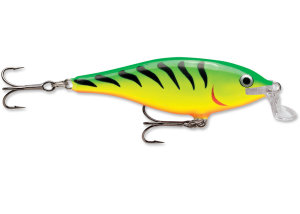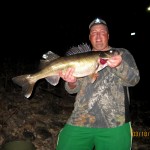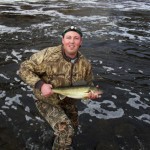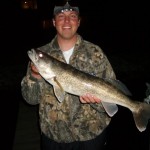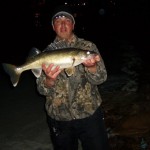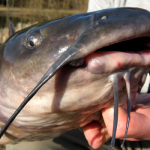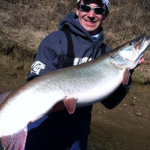By Roy Vivian
I fell in love with walleye fishing at a young age. While fishing from shore, on the Rock and Pecatonica Rivers, I would dream of how many more fish I would catch if I had a boat. Fast forward thirty years and I have a boat that is beyond my wildest dreams, a decked out Lund 1975 Pro-V. You might ask why on earth would I leave my Lund in the garage and fish from shore? The answer is simply big walleyes!
My favorite river to target in March and April is the one with a decent walleye population close to my home. When I was growing up it was the Rock River in Oregon, IL. When I lived in St. Louis, MO it was the Kaskaskia River. Since I have been in Madison, WI since, it has become the Wisconsin River. Each of these rivers are quite different. However, the formula I use for catching walleyes is the same. Fish an hour before and after sundown, find a current seam within a few miles of a dam, and cast a jig/twister or a #13 Floating Rapala. It is that simple!
When shore fishing I like to travel light. I bring two 7 foot spinning rods spooled with 6 lb. diameter Power Pro braided line. One is rigged with a #13 Chartreuse Floating Rapala, the other is rigged with an orange 3/16 Oz. Hutch Jig and a 4” twister tail. I bring a small Plano box with some jigs, a couple of Rapala’s and a few bags of twister tails. I wear a light that clamps on to the bill of my cap and wear knee high rubber boots and that is all.
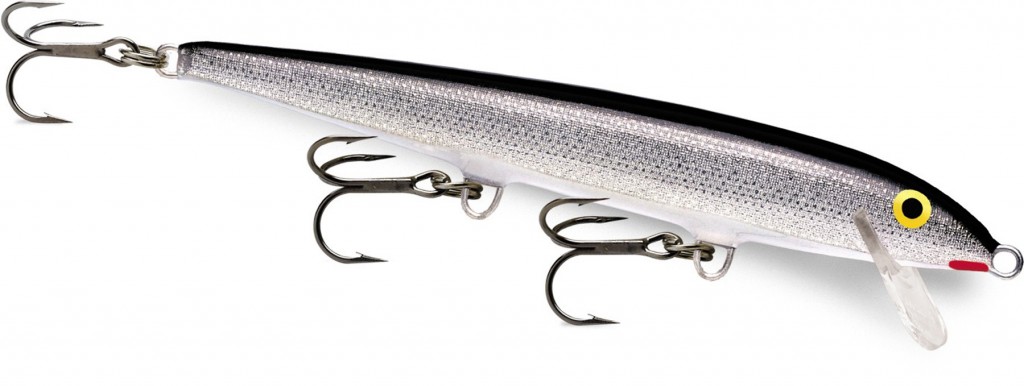
On the Wisconsin River in the Dells area there are sandstone bluffs that, when under water, create a feeding shelf for walleyes. A few of my favorite areas are current breaks with a feeding shelf that is about 3 feet deep. Other key areas are feeder streams and river mouths, bridges, and storm water culverts. On warm, sunny, spring days the snow melt will trickle down asphalt roads and parking lots. This warmer water will attract bait fish and walleyes.
When fishing the jig and twister I swim the jig, grazing it just off of the bottom with a slow steady retrieve. The size of the jig will depend on current and depth for most cases it is a 1/8-1/4 ounce. I cast out into the main current and let the river sweep my bait downstream. I try to position my rod tip as close to the area where the reverse current of the eddy hits the main current. The bites will often come from deeper water when the sun is out and shallower under low light conditions. The bite will be a slight tick to a shoulder jarring thump. Either way set the hook!
When fishing the Floating Rapala I fish it the same way with a steady retrieve. The rule of thumb is the colder the water the slower the retrieve. I usually will throw the jig until sundown and then switch to the Rapala. When walleyes move shallow they are usually there to do one thing and that is eat. The Rapala allows me to fish quicker and cover more water. I have had several nights where I have caught as many as 15 or more nice walleyes within only a few hours of fishing by this method.
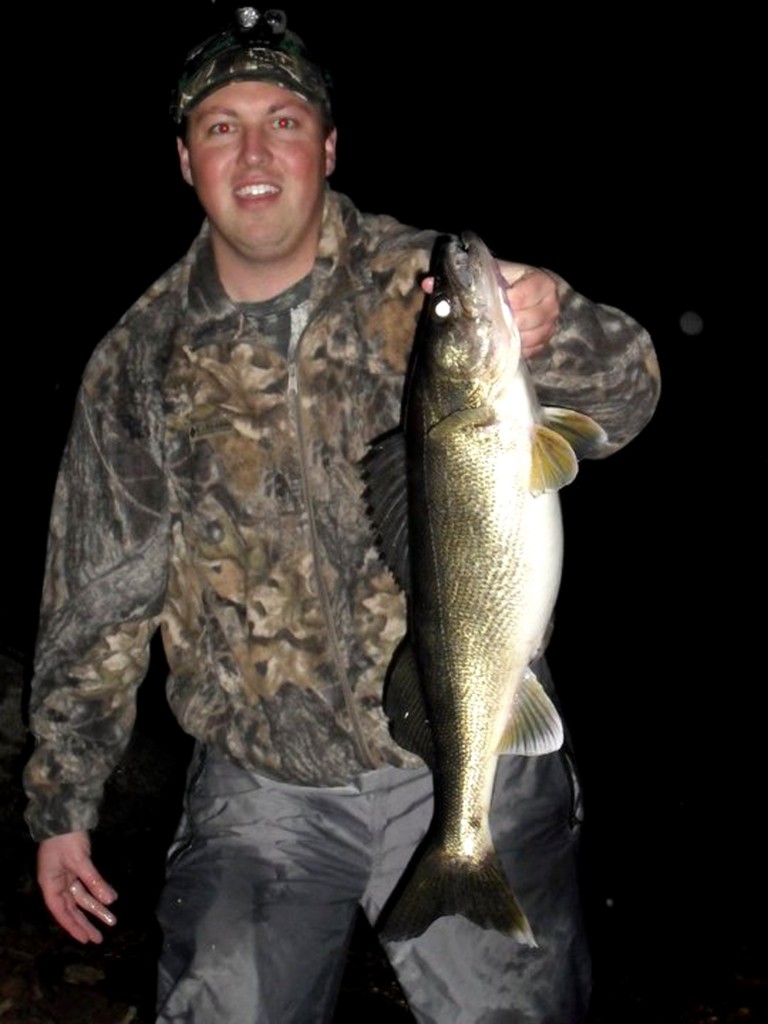
Scott Bleifuss of Verona, WI spends a lot of time shore fishing the Wisconsin River in March and April. Scott has over 15 different unique areas that he fishes from the Dells to Prairie Du Sac. He has a very good idea of which spots will be best depending on water level and current flow. “I like to fish the Dells area in March. I do fish up by the dam but I like to fish down river, away from the crowds,” he says. Scott explains, “In April, the snow melt begins up north so I head down river. I have a couple of spots in Prairie Du Sac that are excellent high water spots and produce big fish.”
Scott’s game plan is similar although he fishes a little differently. “I prefer to use the lightest jig I can use, a 1/16 ounce if possible, or an 1/8 ounce if needed. “ Instead of swimming the jig, Scott prefers to slowly jig the twister or ring worm up the slope and along current breaks. His go-to jig is chartreuse with a 4” silver twister tail with silver flakes.
Scott and I disagree on jig and twister color. I think the most important factors are location and presentation with the color combination being a distant third. He agrees in the location and presentation but thinks his color combination will beat my orange jig and whichever tail I choose. He has challenged me to a contest this spring. I have a feeling the person who does a better job of dialing in where the fish are along with the speed and cadence of the retrieve will catch more fish. I will report the results.
As for crankbaits, instead of a #13 Floating Rapala Scott likes to use a #7 Shallow Shad Rap or a Rapala Countdown when fishing a deeper break. As for color “Anything with a lot of color works,” he says. As you can see with the pictures it is hard to argue with the results.
Don’t wait for a perfect day to come this spring. River walleyes don’t seem to mind coldfronts like their lake cousins and will bite under any horrible conditions unless it’s flooding. The one exception is if there is a rainstorm or snowmelt, which causes a significant rise in water levels and turns the river to mud. This is especially true in rivers that run through productive farmland like the Rock and Pecatonica in IL. The Wisconsin River generally runs pretty clean just be sure to keep an eye on water levels.
Every year there are stories of 10 lb. plus walleyes that are caught from shore. This year let that someone be you!
